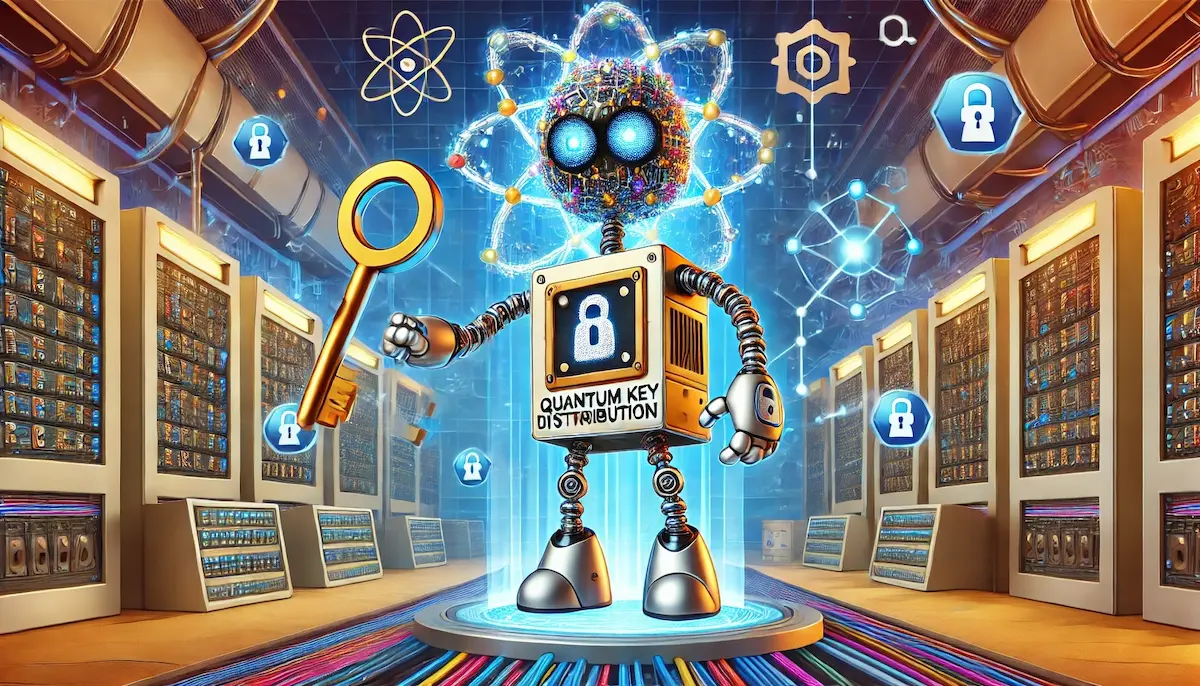Quantum Key Distribution (QKD) is a cutting-edge technology that leverages the principles of quantum mechanics to securely exchange cryptographic keys between two parties. Unlike traditional key distribution methods, QKD offers an unprecedented level of security, making it virtually impossible for eavesdroppers to intercept or tamper with the key without being detected.
How Quantum Key Distribution Works
QKD uses quantum bits, or qubits, which can exist in multiple states simultaneously thanks to the principle of superposition. Additionally, the phenomenon of entanglement ensures that the states of entangled qubits are interconnected, meaning that the measurement of one qubit instantly affects the state of its entangled partner, regardless of the distance between them.
The BB84 Protocol
The most well-known QKD protocol is BB84, developed by Charles Bennett and Gilles Brassard in 1984. Here’s a simplified overview of how it works:
- Key Generation: The sender, Alice, generates a random sequence of qubits in one of four possible states (horizontal, vertical, or diagonal polarizations).
- Transmission: Alice sends these qubits to the receiver, Bob, through a quantum channel.
- Measurement: Bob randomly chooses a basis (horizontal/vertical or diagonal) to measure each qubit. Due to the principles of quantum mechanics, measuring the qubits collapses them into specific states.
- Basis Comparison: After the transmission, Alice and Bob publicly compare their bases for each qubit (but not the actual qubit states). They discard any measurements where the bases don’t match.
- Key Sifting: The remaining matching qubits form the raw key.
- Error Correction and Privacy Amplification: To ensure the key’s security and correctness, Alice and Bob perform error correction and privacy amplification, producing the final shared secret key.
Security Advantages of QKD
The security of QKD is rooted in the fundamental laws of quantum mechanics. If an eavesdropper, Eve, tries to intercept the qubits, the act of measurement will disturb their states, introducing detectable errors. This ensures that any attempt at eavesdropping can be identified, prompting Alice and Bob to discard the compromised key.
Applications of Quantum Key Distribution
QKD is particularly valuable for securing sensitive communications, such as:
- Government and Military Communications: Ensuring that strategic communications remain confidential.
- Financial Transactions: Protecting the integrity and privacy of financial data exchanges.
- Healthcare Data: Securing patient information and medical records against breaches.
Challenges and Future Prospects
While QKD offers robust security, it also faces several challenges:
- Distance Limitations: The effectiveness of QKD decreases over long distances due to the loss of qubits in the transmission medium.
- Infrastructure Costs: Implementing QKD requires specialized equipment and infrastructure, which can be expensive.
However, ongoing research and technological advancements are addressing these challenges. Developments in satellite-based QKD and quantum repeaters are extending the reach of quantum communication networks, making global-scale QKD increasingly feasible.
Conclusion
Quantum Key Distribution is revolutionizing the field of secure communication by providing a method for sharing cryptographic keys that is fundamentally secure against eavesdropping. As technology advances, QKD is set to become an integral part of cybersecurity strategies across various sectors.
Blockfine thanks you for reading and hopes you found this article helpful.
